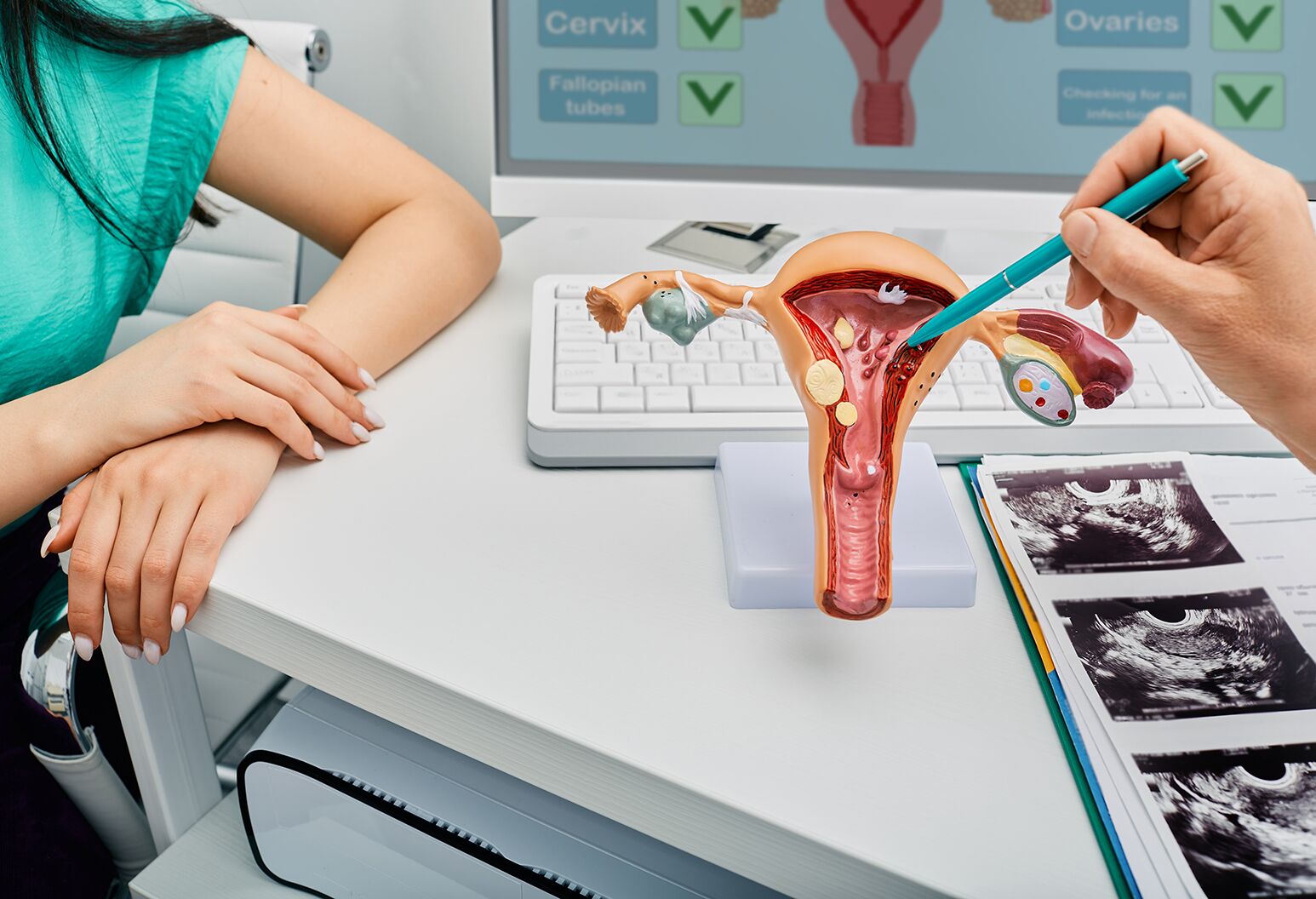women's health
Perimenopause Relief: What Actually Works?

An OB/GYN explains what causes uterine polyps, how they're diagnosed, and your treatment options.
4 min read
A few years back, after months of heavy bleeding during my menstrual cycles, my OB/GYN discovered I had a uterine polyp. While I was assured that it probably wasn’t anything to worry about—less than 5% of polyps are precancerous or cancerous—my doctor wanted me to have it removed. I took his advice and assumed that was the end of that.
Then, a few months ago, my doctor found another polyp. This time, I had no symptoms—the polyp was discovered during a pelvic sonogram at my annual OB/GYN checkup. While I knew the drill (another procedure to have it removed), I started to wonder if this was something I was going to have to deal with every few years.
So, to find out more about uterine polyps, why some women (like myself) may be more prone to them, and if there’s any way to prevent them, I spoke with Dr. Helen Greco, an OB/GYN at Northwell Health.
Uterine polyps are growths that form in the inner lining of the uterus. They can vary in size, from a few millimeters to several centimeters. Polyps differ from uterine fibroids, which are growths of smooth muscle. Polyps, on the other hand, are more glandular in nature. “Fibroids also tend to be denser than polyps,” notes Greco.
By providing your email address, you agree to receive email communication from The Well.
She adds that uterine polyps are common, affecting 10% to 40% of women at some point in their lives. While it’s unknown exactly what causes uterine polyps to occur, hormonal imbalances are thought to be the main culprit. “When women make more estrogen than progesterone, it can stimulate the thickening of the uterine lining and potentially lead to polyp formation,” explains Greco.
As a result, conditions that can cause hormones to fluctuate—such as PCOS (polycystic ovary syndrome), obesity, and perimenopause—can make women more susceptible to uterine polyps. In addition, women taking tamoxifen, an elective estrogen receptor modulator medication used to treat and prevent breast cancer, are also at an increased risk of uterine polyps.
Some women may experience symptoms such as heavy or irregular bleeding. But others don’t have any symptoms, and the polyps are only discovered during other exams. “They may be found during infertility evaluations or routine gynecological evaluations,” says Greco.
Uterine polyps can be confirmed through a pelvic sonogram. For women who are still menstruating, the optimal time for this examination is between days five and nine of the menstrual cycle, when the uterine lining is thinner. “When somebody is on a hormonal contraceptive where there's no hormone stimulation, so hormones are at a set level, you can do it at any time of the cycle,” says Greco. “And of course, a woman who has entered menopause can do it at any time.
In some cases, a saline sonohysterogram or a hysteroscopy may be necessary for a more definitive diagnosis. A saline sonohysterogram uses sound waves and a sterile saline solution, which your doctor will inject into the uterus, to get a better view of any abnormalities. A hysteroscopy utilizes a thin, lighted tube that’s inserted through the cervix and into the uterus, which is then filled with fluid to improve visibility.
Not all polyps require removal. The decision depends on various factors, including the patient's symptoms, risk factors such as uterine precancer and cancer, if they’re undergoing fertility treatments, and the size of the polyp. Polyps greater than 1 centimeter, and any associated with bleeding, should be removed.
As for removal options, dilation and curettage (D&C) was a common procedure in the past. However, hysteroscopy allows for direct visualization and removal of the polyp and can often be performed in an outpatient setting with local anesthesia or sedation.
According to Greco, maintaining a healthy weight and balancing hormones can reduce the risk in some people. Progestin-containing contraceptives or IUDs, which can help maintain estrogen levels, may also be used to control heavy bleeding and prevent overgrowth of the uterine lining.
The Well is Northwell Health’s commitment to the future of health care. In this time of information overabundance, much of which is inaccurate, unhelpful, or even difficult to understand, Northwell Health is on a mission to make a difference as an honest, trusted, and caring partner. The site connects with consumers to provide them with personalized content that reduces their stress, makes them laugh, and ultimately feel more confident and capable on their healthcare journey.